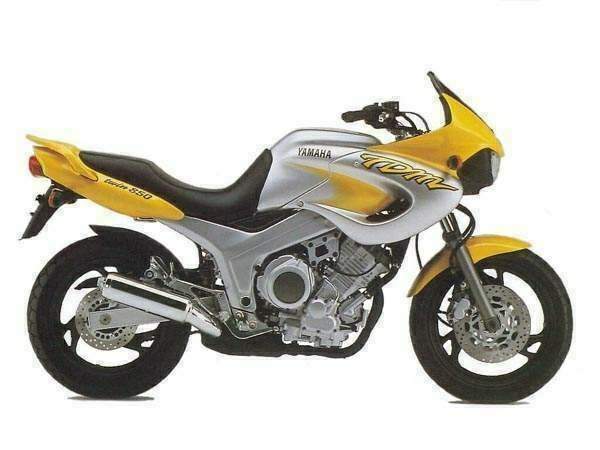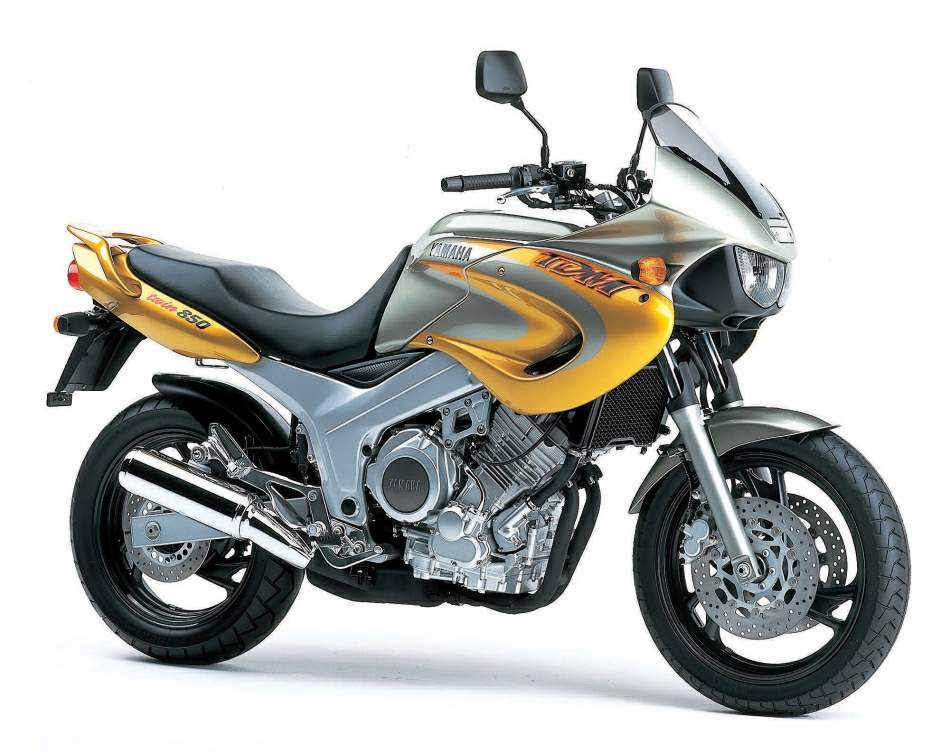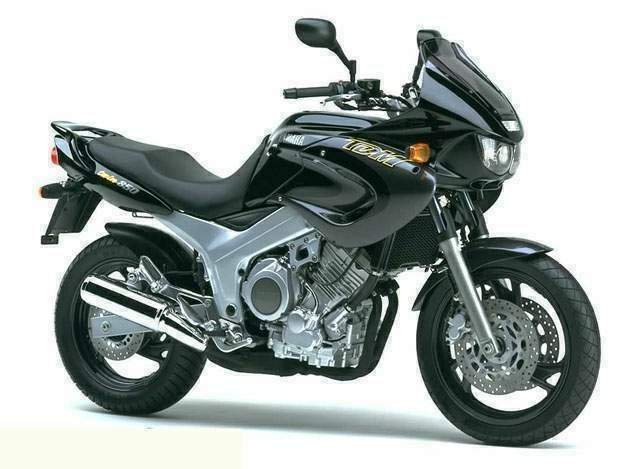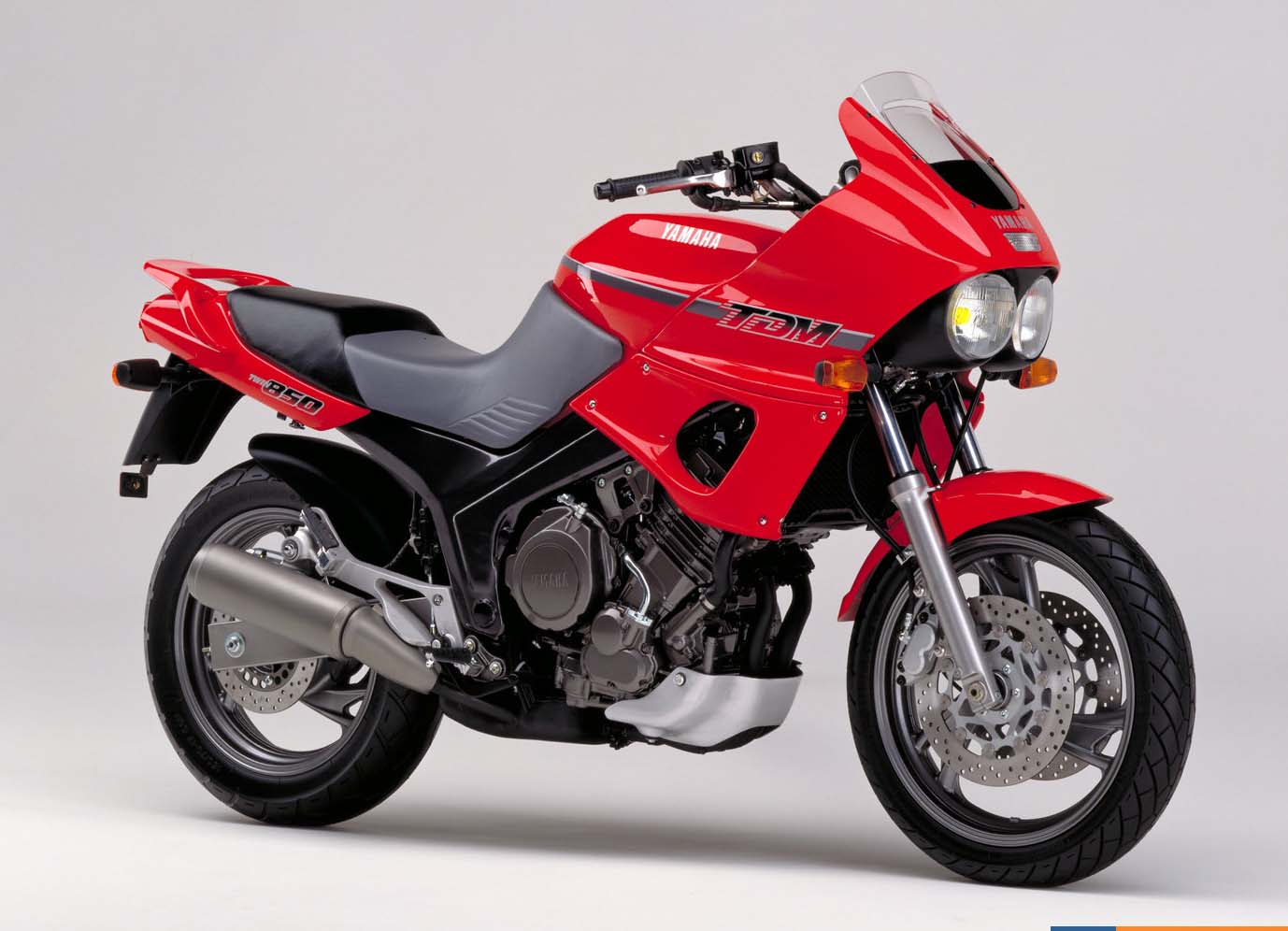The most significant engineering change to the TDM can be found in the 10-valve 849cc vertical twin cylinder power plant. In a move to improve power delivery, the former 360-degree crank design has been replaced by a "big bang" configuration with 270-degree crank pin timing. The closer firing interval of the cylinders should result in improved rear wheel traction, the reason that similar crank designs have been employed in the 500cc GP racing machines. It is debatable if this is really useful for an 80 bhp twin cylinder four-stroke, but there is no doubt that it was a smart move on Yamaha's part. The engine is shared with Yamaha's TRX850 model (which is aimed squarely at the Ducati owner market) and the new engine sounds exactly like an Italian V-twin. It's an addictive sound. Get the engine spinning at 4000 rpm, grab a handful of throttle and listen to that beautifully uneven twin cylinder roar from 5000 to 7000 rpm.
The engine feels strong from the 4000 rpm mark, pulling hard through the 8000 rpm redline and beyond. Well beyond in fact, as the rev limiter kicks in at 9400 rpm. This is enough to run close to all but the most uncompromising sportbikes in the traffic light GP. In the lower rev range the bike seems less happy, giving a feeling of lumpiness under 3000 rpm and a slight flat spot between 3000 and 4000, accompanied by rough engine vibration. This smooths out as the revs rise and at cruising speeds only a slight buzz can be felt through the footpegs.
The TDM has a five-speed gearbox, as there is no call for an extra cog due to the wide flat torque curve. The ratios were chosen quite well, although the gap between first and second is a little wide, especially with the nervous engine characteristics at low rpm. The TDM has a noisy gearbox, which has apparently defeated repeated quieting attempts by Yamaha. Changes between gears from third through fifth are silky smooth but first and second gear changes are clunky and the shift lever requires a firm kicking to avoid a false neutral. Like TDMs of the past, there is some transmission slop, so rolling the throttle on and off usually results in a slight lurch as the engine catches up with the throttle movement.

As Yamaha evolves the TDM, it has been concentrating on updating the chassis. This year the front fork tube diameter has gone up 2 mm to 43 mm, and the previous rubber mounting of the handlebars has been jettisoned. There is some disagreement about the effectiveness of the Michelin Macadam radials that come standard on the bike, but we found them to be well-suited to the TDM, which felt planted on all road surfaces. The brakes are excellent, with good linear feel and enough power to stand the bike on its head.
The dualsport styled riding position could be a total disaster on any bike with a firm eye on the sport and sport/touring market. It could easily fail to meet the requirements for any of these roles. The handlebars are high and wide, giving light steering feel, so maneuverability at low speeds is good. Once up to speed and either doing long stretches on the freeway or cranking it through your favourite curves, a slight tuck comes naturally, and is surprisingly comfortable.
The vestigial fairing keeps most of the wind off the upper body, with only the shoulders and arms exposed. This makes cruising at 5000 rpm and 140 kph (90 mph) easy, although saddle soreness sets in after about an hour in the saddle. A blast down the German autobahn showed an indicated top speed of 220 kph (130 mph). It might have been possible to squeeze a few more km's out of the bike as it was only just pulling 8000 rpm, but sanity prevailed and we backed off to a less wind-blown cruising speed of 160 kph (100 mph).
The ergonomics of the bike are good, with easily operated switchgear, clear, vibration-free mirrors that let you check more than the state of your elbows, and powerful, effective lights for night rides. But again there are little things that spoil the package. The lockable seat is clumsy to refit. The speedo lights don't illuminate the trip meter, and there's no fuel gauge, leaving you guessing at pit stops. The prop stand is short and lacks a spring to fully extend it, making it easy to put the bike's weight on it before it can be fully supported.
The TDM has the potential to be a good bike for many of today's riders: sportriders with a taste for something different, posers cruising the boulevards of Paris, Urban Terrorists wheelying away from every stop light, weekend tourers looking to escape urban stress. But will it play in Peoria? Don't hold your breath. Yamaha has no plans to import the TDM into the U.S. at this time.



